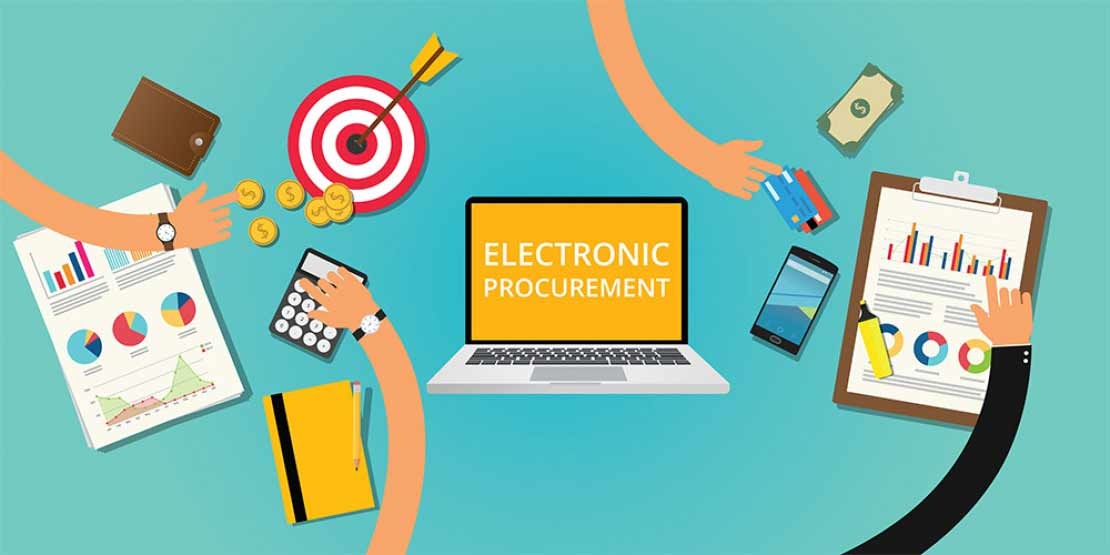E-procurement systems have been available in the software market for over 20 years. Many large organisations are currently implementing e‑procurement solutions to streamline their purchasing processes, especially their indirect purchases. E-procurement is basically technical speak for a fully digital purchasing process. This procure-to-pay approach includes product selection, order shipment and ultimately invoicing. Time to lift the curtain on e-procurement and its main trends.
What is e-procurement?
E-procurement is a transaction between two companies, whereby a buyer can view a seller's products and place an order directly according to a well-defined purchasing procedure.
With e-procurement solutions, the process of looking up products, placing an order (e-order) and/or invoicing (e-invoice) is managed both electronically and centrally to both companies, which helps:
- Keep supplier contracts under control
- Shorten order and validation times
- Reduce the costs of the purchasing process
The three key phases in the P2P process
Access to the product range
Any transaction begins by looking up the required product(s). Buyers use two e‑procurement solutions:
- A hosted catalogue or e-cat is a list of products under contractual conditions manufactured by the supplier and loaded into the customer's procurement solution.
- Punch-Out is an interface between the supplier's website (still in compliance with the conditions of the contract) and the customer's procurement solution.
Other solutions are available, including the "ALL4YOU" system developed by Manutan for customers without an ERP or an e-procurement module in their information system.
Electronic orders
Once validated, the purchase requisition is transformed into an order, which may then be sent by:
- EDI (Electronic Data Interchange), or
- Marketplaces
This means that the customer's procurement solution sends the validated orders to the supplier's information system directly or through intermediate companies (marketplaces).
Electronic invoices
Once the order has been sent, all that remains is to raise the invoice! This stage involves a trusted third party (once again, an intermediate company) to certify, archive and send the invoices to the customer.
Various formats may be used:
- EDI
- Email with a PDF file and electronic signature
- Email with a PDF file but without a signature
The key trends
The Trending in Procurement survey entitled "Purchasing departments: priorities and focus for their e-procurement strategy" carried out by Ivalua in 2015 provides a review of e-procurement practices within nearly 200 European and US large organisations managing major budgets (over three quarters of such companies have a spend volume of over €100 million).
E-procurement to support indirect purchases
To date, 86% of organisations polled have already deployed a procurement tool in their purchasing department. Most of the organisations use solutions to manage their indirect procurement only (82%), as well as both their direct and indirect purchases (18%).
The expected benefits
Greater visibility of the overall procure-to-pay process, from the purchase requisition through to invoicing: this is the benefit most frequently cited by purchasing departments (87%). Increased visibility enables organisations to adjust their consumption, review their panel of suppliers, identify new opportunities, and so on.
The second benefit cited by 75% of respondents is the time saved. Buyers can place an order in just a few clicks over a streamlined platform similar to B2C systems in strict compliance with the negotiated contractual terms.
The situation is just the same with electronic invoicing and ordering. When information systems talk to each other directly, all the manual tasks of entering and sending data disappear!
For large organisations with a high volume of spending, e-procurement has become an almost indispensable tool for saving money and optimising their processes! A broad array of solutions is available to suit every type of requirement, especially since some suppliers like Manutan support and guide their customers through the process and are capable of quickly and nimbly adapting to their procurement processes.









